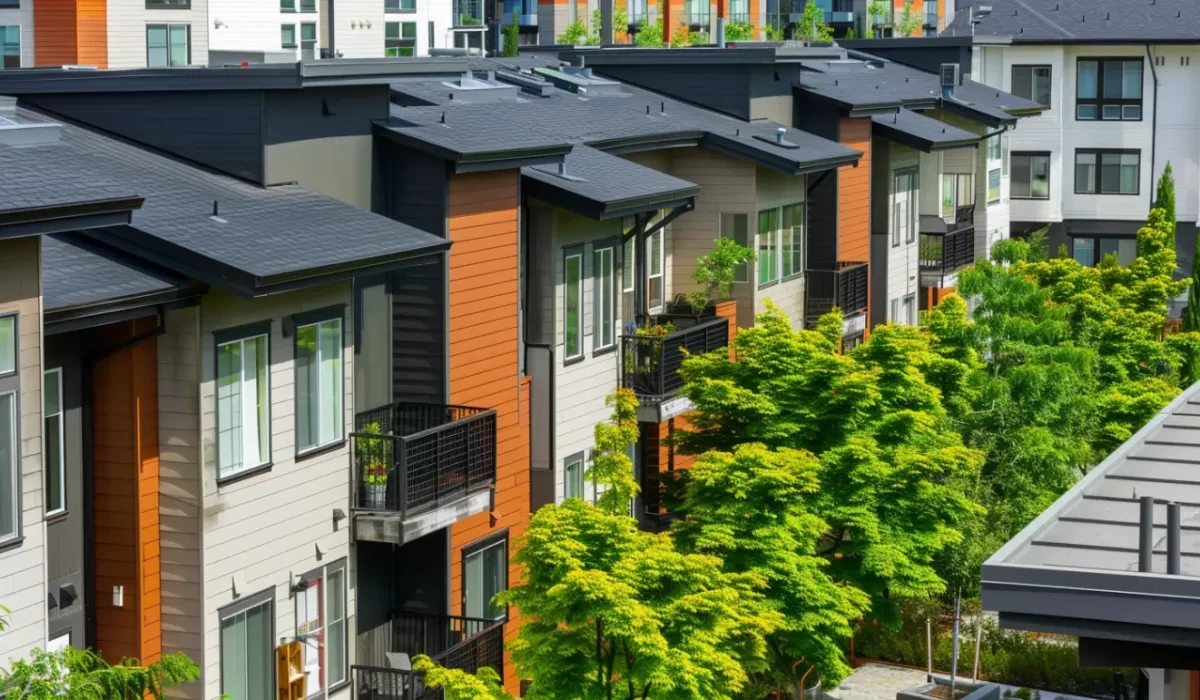Eco-friendly roofing solutions have moved to the forefront for multi-family properties in Anaheim, CA. With growing environmental awareness and rising energy costs, property owners and managers are turning to sustainable roofing options that deliver both environmental benefits and cost efficiency. At Fontaine Roofing, we specialize in providing advanced eco-friendly roofing systems that reduce energy consumption, enhance living quality, and improve property value for HOAs and property managers. Our commitment to high-performance roofing ensures your property stands out for all the right reasons.
Understanding Eco-Friendly Roofing for Multi-Family Properties
As the demand for sustainability rises, multi-family property owners face new expectations for energy savings, green roofs, and environmental responsibility. Eco-friendly roofing systems play a direct role in protecting the environment—reducing carbon footprints, mitigating urban heat islands, and supporting cleaner air in apartment complexes.
The latest trends include advanced cool roof materials, solar-integrated systems, and vegetative green roofs, all designed for modern living. These options not only meet regulatory standards but are also projected to become the most popular options for multi-family properties in 2025 and beyond.
Contact Us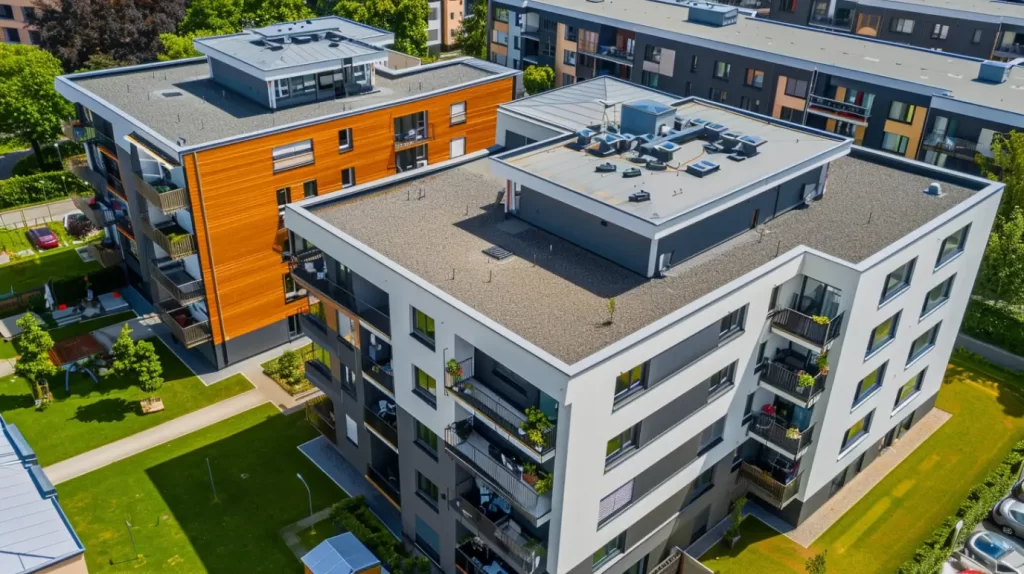
What Makes a Roofing System Sustainable?
A sustainable roofing system uses renewable, energy-efficient, and recyclable materials to minimize environmental impact through reduced carbon emissions, improved water management, and enhanced insulation. This promotes longevity, performance, ecosystem health, and reduced energy consumption in multi-family properties.
As a GAF Master Elite Contractor, CertainTeed Shingle Master, and Polyglass Preferred Contractor, we proudly hold several industry awards. We’re also a FiberTite approved applicator and an IB Roofing Systems Authorized Applicator. Our TRI certification and memberships with CACM, CAI, and NRCA further demonstrate our commitment to eco-friendly roofing excellence.
Key Differences Between Traditional and Eco-Friendly Roofs
Traditional and eco-friendly roofs differ significantly in performance and environmental impact. Conventional options like asphalt shingles use non-renewable materials, leading to higher energy consumption due to poor insulation. In contrast, eco-friendly roofing employs sustainable materials that enhance energy efficiency and minimize installation issues.
Additionally, traditional roofs require minimal maintenance but can incur long-term costs from water damage and other elements. Eco-friendly roofs, such as green and metal roofing, reduce carbon footprints while offering benefits like stormwater management and improved air quality, benefiting both property owners and the environment.
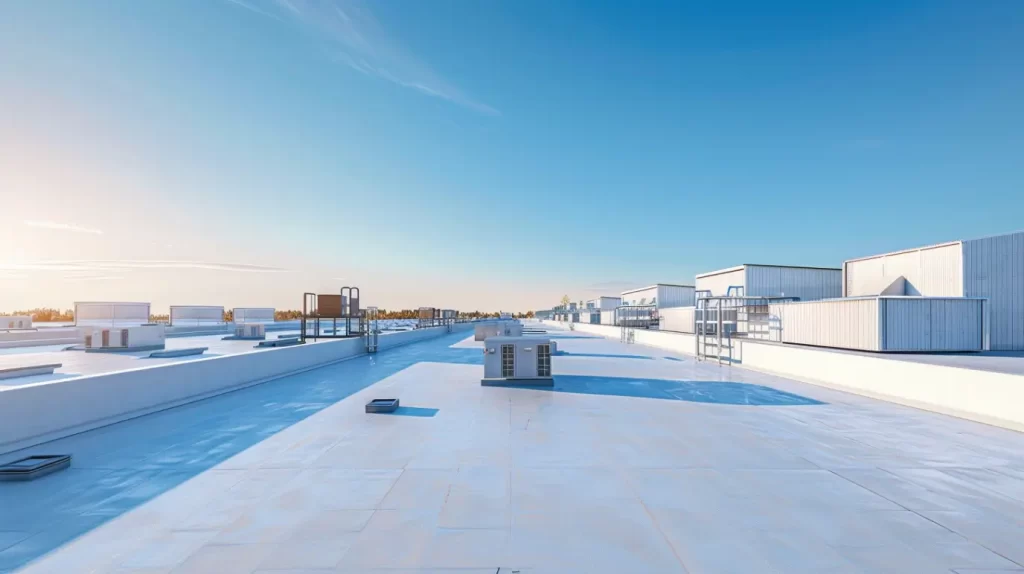
Top Eco-Friendly Roofing Systems in 2025
Choosing eco-friendly options in 2025 requires understanding sustainable technologies. Green roofs support plant life, enhancing aesthetics, improving air quality, and managing stormwater. This natural insulation cuts energy consumption and air conditioning reliance, leading to savings.
Energy-efficient cool roofs reflect sunlight, extending material lifespan. While higher upfront costs may deter some, tax credits and long-term energy savings prove their cost efficiency. Solar options, including tiles and panels, are ideal for eco-conscious multi-family properties aiming to reduce environmental impact while maximizing value.
Green Roofs: Benefits for Apartments and Condos
Integrating green roofs in apartments and condos offers numerous environmental benefits while enhancing living quality. These sustainable systems manage stormwater effectively, reducing runoff and promoting better water management. Additionally, plant life on green roofs provides insulation and absorbs sunlight, lowering energy consumption and bills.
Property owners can also benefit from tax incentives for using eco-friendly materials. Beyond financial gains, green roofs improve air quality, support biodiversity, and create inviting spaces that foster community engagement. This innovative option combines environmental responsibility with increased tenant appeal.
Energy-Efficient Cool Roofs: Technology and Cost Comparison
Energy-efficient cool roofs use advanced technologies to reflect more sunlight and absorb less heat than conventional roofing systems. This approach reduces energy consumption by lowering air conditioning needs, cutting energy bills, and minimizing the carbon footprint of homes.
While the initial investment for cool options—like reflective coatings or specialized shingles—may be higher, long-term savings often exceed upfront costs. Property owners can benefit from potential tax incentives and increased property value due to reduced energy expenses. Thoughtful comparisons between options, such as asphalt shingles and reflective metal roofing, can enhance environmental responsibility and overall building performance.
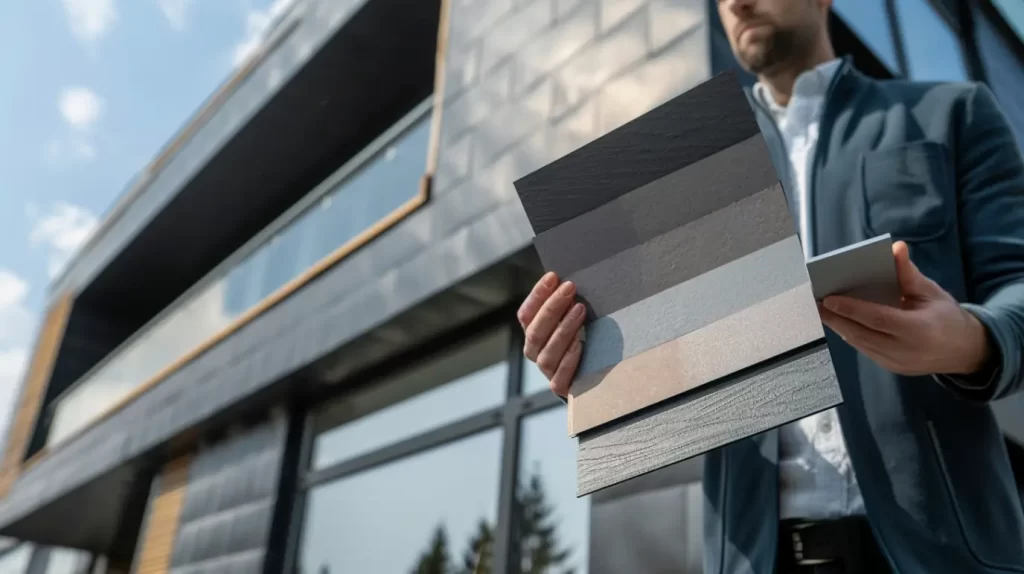
Comparing Leading Sustainable Roofing Materials
When it comes to sustainable roofing for multi-family buildings, the choice of materials is crucial. The top options—metal roofing, recycled shingles, cool roofs, and green roofing—each offer unique strengths in cost, durability, and eco-friendliness. Metal and cool roof systems, in particular, are popular for their long lifespan and efficiency in reflecting sunlight, making them ideal for Southern California’s climate.
Fontaine Roofing’s partnerships with GAF, Certainteed, and Polyglass ensure property owners access the most advanced, reliable roofing solutions for their green roofing needs.
Recycled Shingles vs. Metal Roofing
Choosing the right system affects both sustainability and cost efficiency. Recycled shingles, made from post-consumer materials, reduce waste and offer durability at a lower initial cost, but require regular maintenance.
In contrast, metal roofing provides better energy efficiency with reflective surfaces that lower heat absorption, reducing energy costs in summer. Although it has a higher upfront investment, it offers long-term savings and minimal upkeep.
Solar-Integrated Roofing Solutions
Integrating solar panels into roofing systems boosts energy efficiency and lessens the environmental impact of multi-family properties. These systems harness solar energy to power common areas and individual units, reducing energy bills and reliance on non-renewable resources. Solar options, including tiles and traditional panels, offer renewable energy generation with aesthetic appeal for eco-conscious owners.
Additionally, solar-integrated roofing often qualifies for tax incentives, making it a financially smart choice despite higher upfront costs. With minimal maintenance and effective stormwater management, these roofs encourage environmental responsibility while providing long-term savings and attracting tenants seeking sustainable living options.
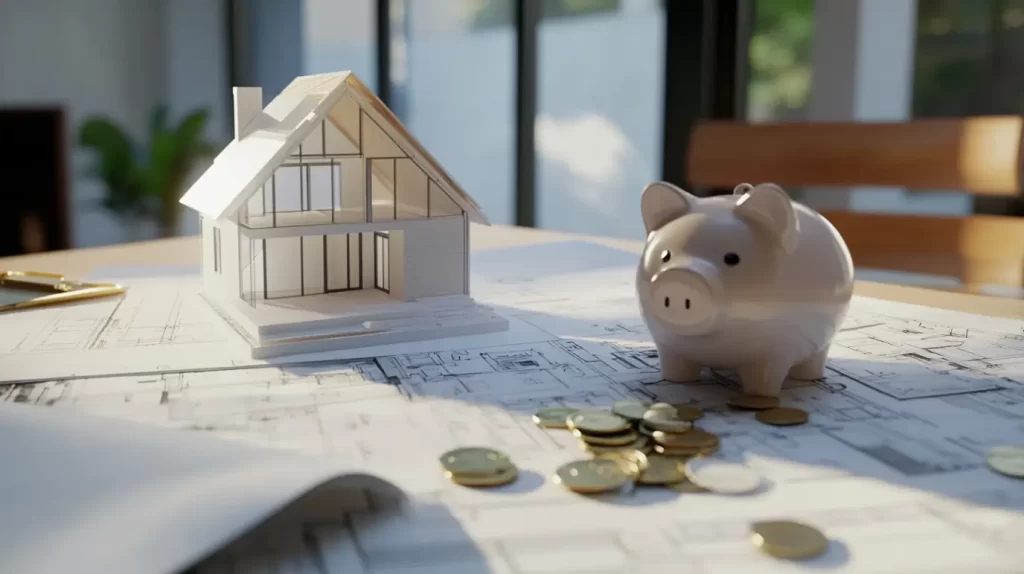
How Eco-Friendly Roofs Improve Property Value and Living Quality
Upgrading to sustainable roofing brings tangible value to multi-family properties. Enhanced insulation and energy savings translate into lower operating costs, while modern eco-friendly materials boost property appeal for green-minded tenants.
Beyond financial benefits, these roofing solutions create a healthier living environment by reducing heat, improving air quality, and minimizing the property’s environmental impact. The result is a more attractive, efficient, and future-ready apartment or condo community, increasing both market value and resident satisfaction.
Enhanced Energy Efficiency and Insulation
Improved energy efficiency is a key benefit of sustainable roofing systems, enhancing both environmental responsibility and financial savings for property owners. Materials like metal roofing or recycled shingles boost insulation, lowering energy consumption and costs. Well-designed roofs also manage stormwater effectively, preventing water damage.
Eco-friendly roofs reduce air conditioning needs through better heat absorption and ventilation, keeping spaces comfortable while minimizing carbon footprints. Multifamily properties with sustainable roofs enjoy reduced energy bills and tax credits, reinforcing their long-term cost efficiency.
Long-Term Savings and Increased Tenant Appeal
Investing in eco-friendly roofs offers significant long-term savings for property owners. Sustainable materials and energy-efficient solutions reduce energy consumption and lower bills. Minimal maintenance for options like metal or green roofs enhances their cost efficiency, making them more viable than traditional roofs.
Additionally, sustainable roofs increase tenant appeal, attracting environmentally conscious residents. Features like green roofs manage stormwater and improve, contributing to a modern living experience. These benefits enhance the property’s marketability, reflecting the demand for sustainable living alongside energy savings.
Connect With Us
In conclusion, adopting eco-friendly roofing for multi-family properties in Anaheim, CA, enhances sustainability, property value, and tenant satisfaction. By utilizing sustainable materials like recycled shingles and solar-integrated solutions, property managers can make informed choices that lead to long-term savings and energy efficiency. These roofs promote a healthier living environment and demonstrate your commitment to sustainability. Ready to explore eco-friendly options for your multi-family property in Anaheim, CA? Contact Fontaine Roofing today for a consultation and let’s create a greener future together!
Read our blog: Why HOAs Should Schedule Annual Roof Inspections
Frequently Asked Questions
What are the maintenance requirements for eco-friendly roofs on multi-family buildings?
Eco-friendly roofs usually require minimal maintenance when properly installed. Regular inspections, prompt repairs, and occasional cleaning are key. Partnering with experienced roofing contractors ensures your sustainable roofing system remains effective and extends its lifespan, providing reliable protection and energy efficiency for your multi-family property.
Are there government incentives or rebates for installing sustainable roofing systems?
Yes, property owners can access government incentives, such as tax credits and rebates, for installing sustainable materials and energy-saving roofing systems. These incentives help offset upfront costs and encourage investment in eco-friendly upgrades, making sustainable roofing financially attractive for multi-family buildings.
What are the alternative roofing systems?
Alternative options for commercial buildings and new construction include green roofing, cool roofs, metal roofs, and advanced flat roof membranes. Each solution offers unique strengths—such as superior insulation, stormwater management, or solar integration—catering to diverse property needs and maximizing both energy efficiency and sustainability.

